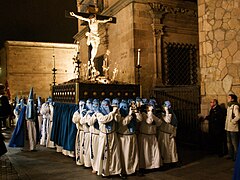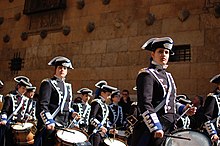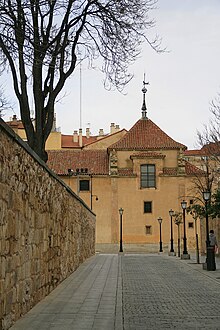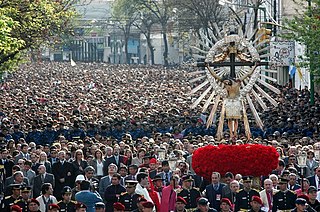
A Holy Week procession is a public ritual march of clergy and penitents which takes place during Holy Week in Christian countries, especially those with a Catholic culture. Various images of the saints, especially the Virgin Mary, and most importantly the image of the crucified Christ are carried aloft by foot on shoulder-borne pasos as an act of penance; acts of mortification are carried out; traditional Christian hymns and chants are sung. In many confraternities of penitents, the faces of the members are covered by elaborate hoods, such as the capirote, as a way of hiding one's identity in order to not ostentatiously draw attention to oneself while performing penance. Crosses, and biers holding Catholic holy images surrounded with flowers and offerings of candles, are carried usually from one parish church to another led by the clergy, monastic orders, or heads of the penitential orders.

Lucena is a Spanish city and municipality, in the province of Córdoba, autonomous community of Andalusia, 60 km southeast of the provincial capital Córdoba. Its circa 42,000 people makes Lucena the second largest municipality in the province after Córdoba. It is located at the conjunction of important highways in the geographical center of Andalusia. People from Lucena are called lucentinos. The city was originally known as Eliossana, etymologically reinterpreted as deriving from the Hebrew אלי הושענא Elí hoshanna, "May God save us". The name in Arabic is اليسانة Al-Yussana.
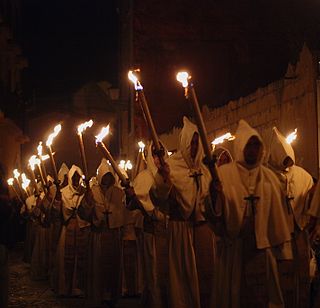
Holy Week in Zamora, Spain, is the annual commemoration of the Passion of Jesus Christ that takes place during the last week of Lent, the week immediately before Easter. Holy Week is the Christian week from Palm Sunday through Easter Sunday. It can take place in March or April. In Zamora, Holy Week is celebrated by 16 Catholic religious brotherhoods and fraternities that perform penance processions on the streets of the city.

Holy Week in Seville is one of two biggest annual festivals in Seville, Andalusia, Spain, the other being the Feria de Abril, which follows two weeks later. It is celebrated in the week leading up to Easter, and features the procession of pasos, floats of lifelike wooden sculptures of individual scenes of sorrowful Mysteries of the Rosary, or images of the grieving Virgin Mary.
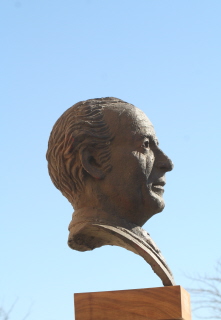
Antonio León Ortega was a Spanish sculptor known for his Andalusian imagery.

Gregorio Fernández was a Spanish Baroque sculptor. He belongs to the Castilian school of sculpture, following the style of other great artists like Alonso Berruguete, Juan de Juni, Pompeyo Leoni, and Juan de Arfe.
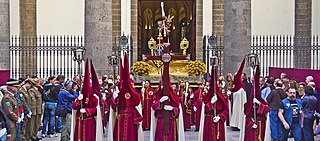
Holy Week in Spain is the annual tribute of the Passion of Jesus Christ celebrated by Catholic religious brotherhoods and fraternities that perform penance processions on the streets of almost every Spanish city and town during the last week of Lent, the week immediately before Easter.

The Cathedral of San Cristóbal de La Laguna or Catedral de Nuestra Señora de los Remedios is a Roman Catholic church in Tenerife, Spain. Begun in 1904 and completed in 1915, it is dedicated to the Virgin of Los Remedios. The cathedral is the mother church of the diocese, which includes the islands of Tenerife, La Palma, La Gomera and El Hierro in the province of Santa Cruz de Tenerife. It is therefore where the episcopal seat of the bishop of this diocese, currently occupied by Bishop Bernardo Álvarez Afonso. This is one of the most important churches of the Canary Islands.

The Cristo de La Laguna is a wooden sculpture that represents the crucified Jesus of Nazareth. It is located in the Royal Sanctuary of the Christ, in the city of San Cristóbal de La Laguna.
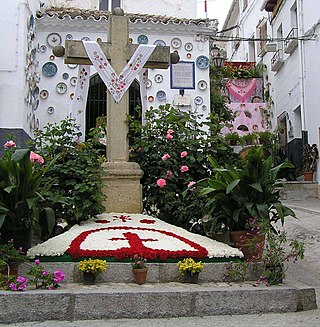
The Fiesta de las Cruces or Cruz de Mayo is a holiday celebrated on 3 May in many parts of Spain and Hispanic America.
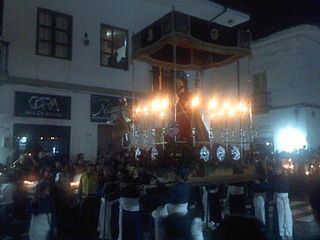
The Holy Week in Popayán, Cauca (Colombia), is the celebration of the Passion and death of Jesus Christ through daily processions continuously performed since the sixteenth century between Good Friday nights and Holy Saturday. This parade takes place in the ancient streets of the "White City". Religious images of Spanish, Andalusian, Quito, Italian and Payanes arranged on a wooden platform with 4 front and 4 back "barrotes" (bars) are carried in the shoulders of the "Cargueros". These images are representations of different episodes recounted in the Gospels on the Passion, Crucifixion and Death of Jesus Christ. Each performance is a "paso" (step). The steps are taken through the streets, a distance of a cross-shaped layout since the time of the Conquest, passing by the main churches and temples of the city.

Antonio de Paz was a sculptor from Salamanca who was born at the end of the 16th century and died in 1647. His work is prominent in Salamanca's churches and cathedral.
The Penitential Brotherhood of the Holy Eucharist, founded on May 6, 1959, is one of nine religious brotherhoods of the city of Bilbao that take part in its Holy Week. Bilbao is the most important place for the Holy Week in Spain in the northern part of the country, but not as well known as the Holy Week in Seville. It is canonically headquartered at the Jesuit School, so it is popularly known as the Jesuit Brotherhood. It consists of current and former students, as well as family and friends, but also of people outside the school.

The Illustrious Brotherhood of the Holy Cross of the Redeemer and the Immaculate Conception, his Mother, known as the Vera Cruz or True Cross is a Catholic fraternity established in Salamanca, Castile and León, Spain in 1506.

Alejandro Carnicero was a Spanish sculptor of the Baroque period. He belongs to the Castilian school, following the style of Gregorio Fernández. His artistic language evolved from the 17th century models to a more rococo and gentle style.

The Illustrious Penitential Brotherhood of Our Lady of Anguish is a Catholic fraternity established in Valladolid, Castile and León, Spain in 1536.
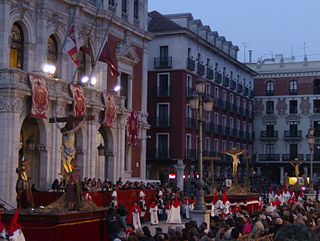
The Holy Week in Valladolid is one of the main tourist attractions, and cultural and religious events of Valladolid and the surrounding province during Holy Week in Spain. It boasts of renowned polychrome sculptures, created mainly by sculptors such as Juan de Juni and Gregorio Fernández, who were active when the city served as the imperial court. The city's National Sculpture Museum has a total of 42 images for the processions. The Holy Week in Valladolid is known to depict the Passion with great fidelity, rigor and detail.

Holy Week in Cuenca (Semana Santa de Cuenca) is the most important religious event of Cuenca, Spain. It is celebrated in the week leading up to Easter (Holy Week among Christians). As a reflection of its cultural, historic and spiritual importance, Holy Week in Cuenca was declared Fiesta of International Tourist Interest of Spain.
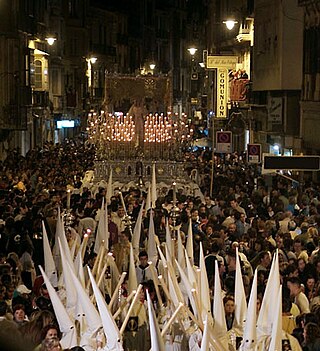
Holy Week in Málaga, is the annual commemoration of the Passion of Jesus in Málaga, Spain. It takes place during the last week of Lent, the week immediately before Easter. It is one of the city's main cultural and religious events.

Holy Week in San Cristóbal de La Laguna is a traditional event that has been repeated for centuries in the historic center of San Cristóbal de La Laguna, a city located on the island of Tenerife, Spain. It is considered the most remarkable Holy Week in the Canary Islands.
